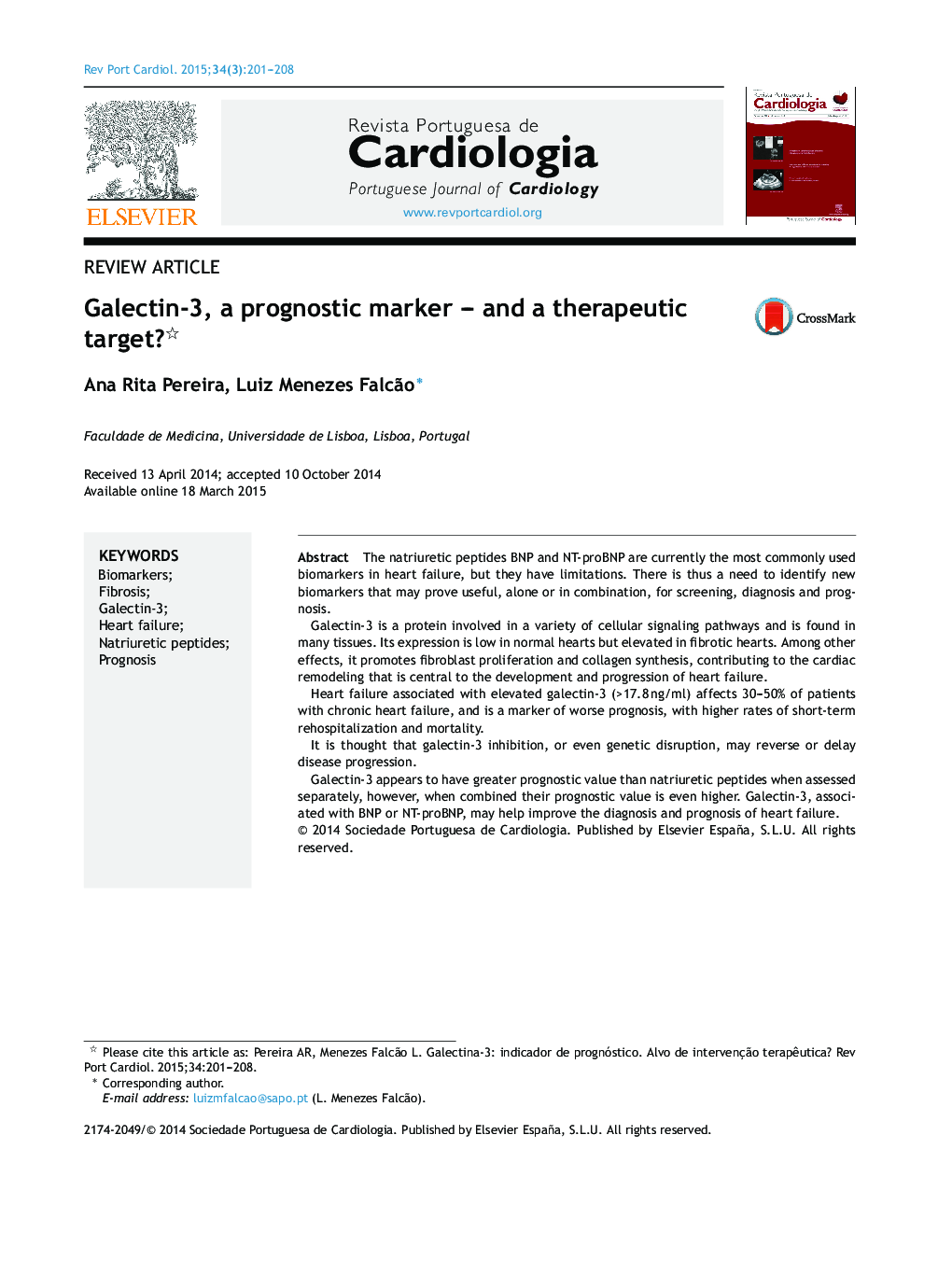| کد مقاله | کد نشریه | سال انتشار | مقاله انگلیسی | نسخه تمام متن |
|---|---|---|---|---|
| 3020132 | 1182288 | 2015 | 8 صفحه PDF | دانلود رایگان |

The natriuretic peptides BNP and NT-proBNP are currently the most commonly used biomarkers in heart failure, but they have limitations. There is thus a need to identify new biomarkers that may prove useful, alone or in combination, for screening, diagnosis and prognosis.Galectin-3 is a protein involved in a variety of cellular signaling pathways and is found in many tissues. Its expression is low in normal hearts but elevated in fibrotic hearts. Among other effects, it promotes fibroblast proliferation and collagen synthesis, contributing to the cardiac remodeling that is central to the development and progression of heart failure.Heart failure associated with elevated galectin-3 (>17.8 ng/ml) affects 30–50% of patients with chronic heart failure, and is a marker of worse prognosis, with higher rates of short-term rehospitalization and mortality.It is thought that galectin-3 inhibition, or even genetic disruption, may reverse or delay disease progression.Galectin-3 appears to have greater prognostic value than natriuretic peptides when assessed separately, however, when combined their prognostic value is even higher. Galectin-3, associated with BNP or NT-proBNP, may help improve the diagnosis and prognosis of heart failure.
ResumoOs péptidos natriuréticos BNP e NT-proBNP são atualmente os biomarcadores mais utilizados na insuficiência cardíaca, no entanto, permanecem algumas limitações. Isso justifica a necessidade de identificar novos biomarcadores que possam revelar vantagens, isoladamente ou em associação, no rastreio, diagnóstico e prognóstico. A Galectina-3 é uma proteína envolvida em diversas vias de sinalização celular. Pode ser encontrada em vários tecidos, sendo a sua expressão baixa no coração normal e elevada no coração fibrótico. Entre outros efeitos, é responsável pela proliferação de fibroblastos, promoção da síntese de colagénio, contribuindo para a remodelagem cardíaca que é determinante no desenvolvimento e progressão da insuficiência cardíaca.A insuficiência cardíaca mediada pela Galectina-3 (>17,8 ng/mL) afeta 30-50% dos doentes com insuficiência cardíaca crónica, apresentando pior prognóstico, com maior taxa de reinternamento a curto prazo e mortalidade.Pensa-se que através da inibição da ação da Galectina-3 ou mesmo através do knock-out genético se possa reverter ou promover um atraso na progressão desta doença.Quando avaliados isoladamente, a Galectina-3 parece ter maior valor prognóstico do que os péptidos natriuréticos, no entanto, quando se combinam, o valor prognóstico é ainda superior. É possível admitir que a Galectina-3, associada ao BNP ou ao NT-proBNP, possa vir a ser considerada no futuro como uma alternativa que permita melhorar o diagnóstico e o prognóstico da insuficiência cardíaca.
Journal: Revista Portuguesa de Cardiologia (English Edition) - Volume 34, Issue 3, March 2015, Pages 201–208